Wojciech's headless body had time to lie in the river for several days, before the blueish and swollen body was casually buried in the ground so as not to spread the stench. For Bolesław, however, these corpses were more valuable than gold. And no wonder. There are many indications that he was the one behind the hapless bishop's death.
995 was not an easy year for Bolesław the Brave. He managed to drive his stepmother and stepbrothers out of the country, but the struggle for power was not over. The widow of Mieszko I, Oda, until recently had excellent connections in Germany. It was thanks to her that the old prince made a close alliance with the German Empress Theophano and her little son Otto III. The boy even got an exotic gift from Mieszko in the form of a camel.
Now, in connection with the imperial court, Oda saw the last chance to take power in Poland. She hoped that she would be able to build a coalition of German magnates, and perhaps even obtain military aid from the emperor himself.
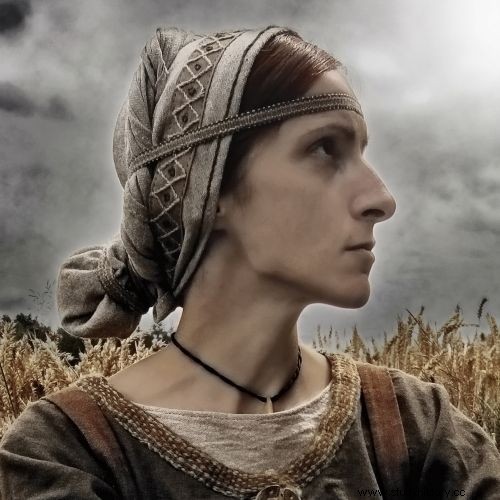
Katarzyna Czylok as Oda in the photo of Sylwester Zalewski.
However, the situation did not go as planned. Teofano was already dead, and with the new regent - the grandmother of the underage emperor, Adelaide - Oda had much worse contacts. Anyway, Adelaide was quickly removed from power, and Otto III was recognized as an adult.
Chaos reigned in Germany. The king was only grown up in law. In fact, as a fourteen-year-old boy, he was not yet fully suited to self-government. It was surrounded by a tight cordon of clapper and nods, and archbishops and princes of the Reich fought for real power behind the king's back.
Even the dynasty chronicler Thietmar admitted that the ruler brutally dismissed his grandmother "to her great sorrow" and that he did so because "he succumbed to willful youths".
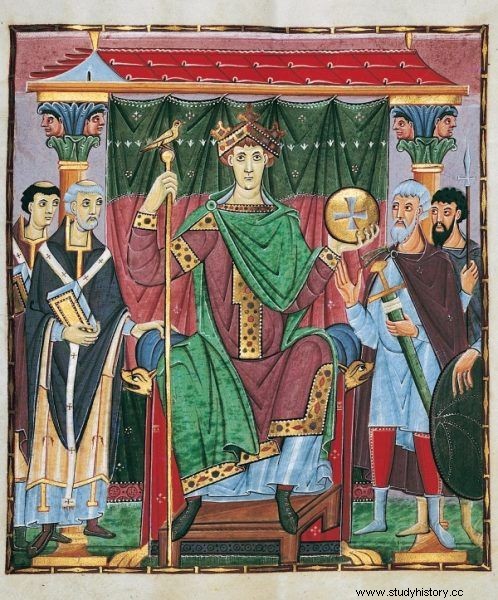
Otto III in the fullness of his teenage majesty…
Fourteen-year-old on the throne
The desperate fight for the favor of the boy sitting on the throne also had its Polish accent. Oda did her best to remind Otto that Mieszko was a faithful ally of the empire and a friend of his mother. Bolesław, however, understood better what needs to be done to creep into the favors of the fourteen-year-old. He made efforts to become, not a friend of the empire, but of the emperor himself.
Already in 996, he personally visited the Elbe to take part in the imperial expedition to the pagans. A few weeks spent together were enough, and he wrapped Otto III around his finger. Darts, a coarse thirty-year-old who does not give a damn, made an amazing impression on the boy who had been forced to hide behind his mother's (and grandmother's) dress throughout his youth. Otto craved independence and freedom. The Polish prince, meanwhile, was their epitome.
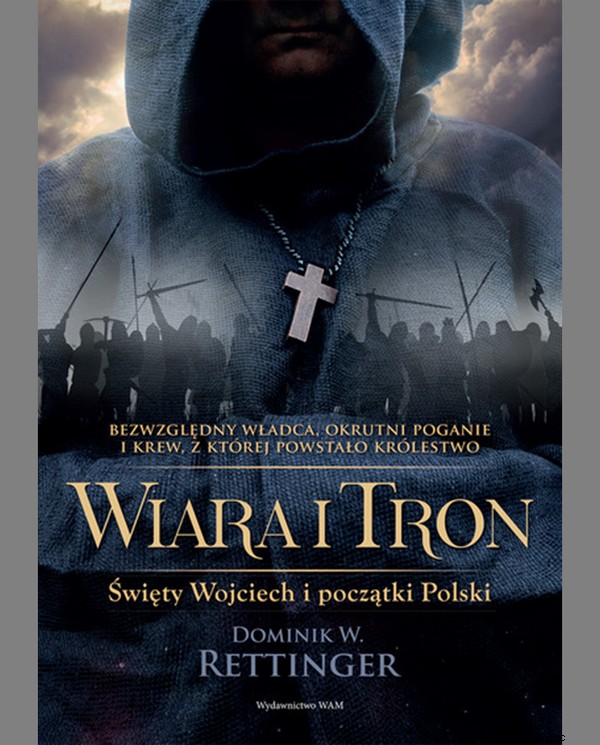
The article was inspired by, among others, the book by Dominik W. Rettinger, “Wiara i Tron. Saint Adalbert and the beginnings of Poland ”(WAM Publishing House 2016). Available at Znaku!
online bookstoreBolesław masterfully manipulated the teenager's emotions, day after day stripping Oda of her last hopes for a return to power. He took over all the sympathy and trust that the new ruler of Germany had for the Piasts for his own needs. He was the second Mieszko in Otto's eyes, and not any of Oda's sons closer to Otto's age.
Brave as a… playful young man?
Otto III was a deeply religious young man with a clear tendency towards mysticism. He was at the same time an extreme idealist, and maybe even a naïve - he believed in the reconstruction of a real empire with the capital in Rome, as well as in harmonious cooperation between the continent's dynasties. He wanted to move mountains, see miracles with his own eyes and do things that his predecessors had never dreamed of. The cunning Bolesław completely exploited these, whatever childish (or simply childish) dreams.
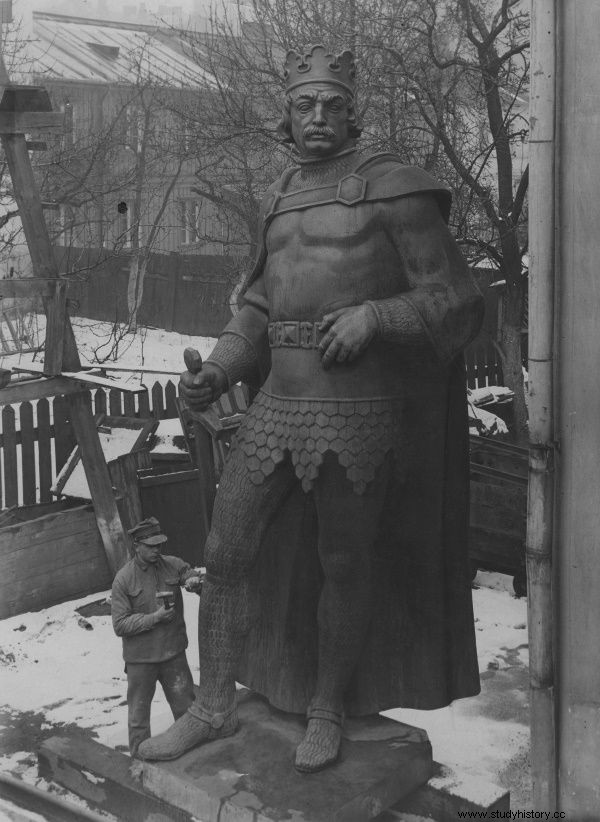
As befits a monumental figure, Chrobry knew exactly what he had to do ...
He quickly began to portray himself as a great supporter of a united Europe and a man of faith. In order to impress Otto, he welcomed his distant relative in Poland - Wojciech Sławnikowic with all honors. He was the bishop of Prague, who fled his homeland after a Czech prince murdered almost his entire family as part of the famous "Libice massacre".
Bolesław showed Wojciech great hospitality, but he did not offer him any warm job in Poland. On the first occasion, he sent him farther east on a doomsday mission.
Death mission
Wojciech was to convert the Prussians:the wildest and ruthless of the tribes with which Poland bordered. And at the same time the most fierce and hostile to everything that came from the Piast state. Bolesław had just organized an armed expedition to the Prusai. And, of course, each new visitor from the west had to reckon with the fact that he would be greeted with spearheads, and not with bread and salt.
It is difficult to say whether Wojciech was aware of the scale of the challenge. The Polish ruler was able to make a sober assessment of the chances.
This article has more than one page. Please select another one below to continue reading.Attention! You are not on the first page of the article. If you want to read from the beginning click here.
He knew what the mood was in Prussia. The language barrier was also obvious for him. Nobody had to explain to him that Wojciech would not be able to communicate with Prussia, while converting any Slavs would not pose any difficulties for him.
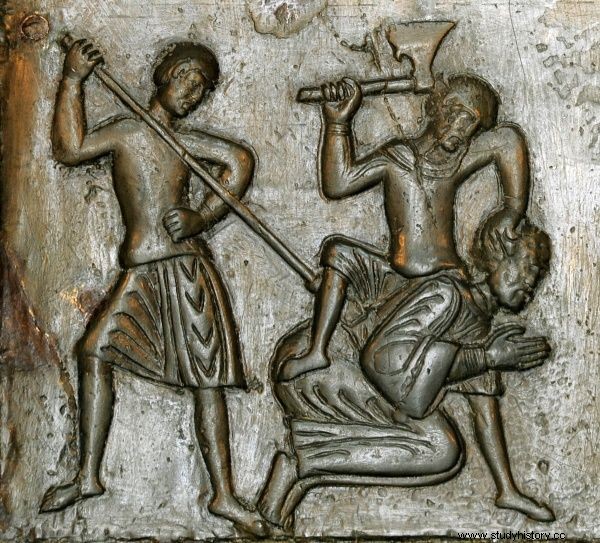
Wojciech's martyrdom pictured on the Gniezno door.
If, nevertheless, he directed the bishop to Prussia, and not, for example, to Lesser Poland, Mazovia or even Pomerania, then he had to reckon with the fact that the missionary would not return. Perhaps this was what he had been quietly expecting. The further development of events clearly shows that Wojciech's defeat was in Bolesław's best interest.
Desire for great holiness
The prince began to profit from the tragedy without the slightest delay. First, he bought the missionary's head as ostentatiously as possible. The Prusai impaled Adalbert on a stake and displayed it to the public. A few days later some random traveler took off his mutilated head secretly and put it in his carry-on bag, after which he came to Gniezno with the hope of earning a large sum.
He was not disappointed. Bolesław received him in audience and in front of the whole court personally handed him a sack of silver. Even the author of one of Wojciech's lives did not hide that the ruler did it because "he was eager to gain such great sanctity."
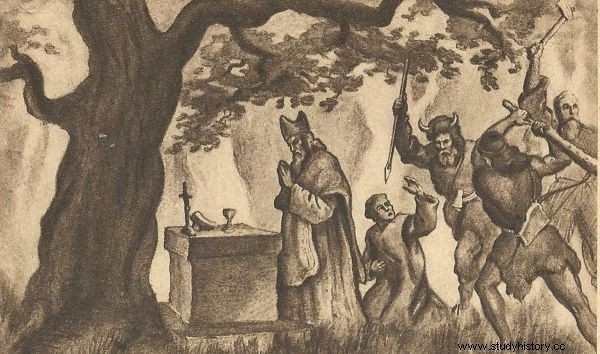
Murder of Wojciech on a postcard from the beginning of the 20th century.
This is not the end. Admittedly, Wojciech's headless body managed to lie in the river for a few days, and then the blue and swollen body was carelessly buried in the ground so that it would not spread the stench, but Bolesław still wanted it for his needs. He sent to Prussia ... the same missionaries who had accompanied Adalbert a few weeks earlier and watched his agony closely. Now the men were carrying the ducal mammon with them, so no one tried to murder them because of religious differences.
The popular story of buying Wojciech's corpse for its weight in gold is only a fairy tale, but it is known that the legation had "enormous treasures". The Prussians gladly accepted the silver and agreed that two priests - Wojciech's brother, Radzim-Gaudenty, and a certain Bogusz - would dig up his grave. They returned to Poland as heroes.

The article was inspired by, among others, the book by Dominik W. Rettinger, “Wiara i Tron. Saint Adalbert and the beginnings of Poland ”(WAM Publishing House 2016). Available at Znaku!
online bookstoreMastery of manipulation
With the corpse at his place, the prince began to create the legend of the new martyr and patron of Christian Europe at a spectacular pace. Radzim eagerly helped him in this. The arrangement between them was probably simple: the Czech priest did not ask why Bolesław sent missionaries to certain death. In return, the ruler did not pursue the subject of the mysterious escape of Radzim and Bogusza. As a result, to this day, it is not known how it actually happened that Wojciech died, and not even a hair of his companions fell off his head. On the other hand, it is clear that the Polish ruler could not have come out better on the whole thing.
Otto III knew and admired Bishop Wojciech. Upon hearing of his death, he made a decision almost immediately to move to Gniezno. And about the generous reward for Bolesław for taking care of the recovery of the body and the proper burial of the unfortunate missionary ...
***
Did Chrobry pay with innocent blood for the royal crown? Explore the Middle Ages as it really was:ruthless, brutal and sensual. In the pages of the novel by Dominik W. Rettinger "Faith and the Throne" Brave is ready to do anything to join the group of anointed. Addictive reading - we recommend it!
Sources:
The article is based on the literature and materials collected by the author during the work on the book "Iron Ladies. The Women Who Built Poland ” . Selected bibliographic items below:
- G. Althoff, Otto III , Pennsylvania 2003.
- G. Labuda, Saint Adalbert. Bishop - martyr, patron of Poland, Czech Republic and Hungary , Wrocław 2000.
- H. Łowmiański, Polish-Prussian relations during the first Piasts , "Przegląd Historyczny", vol. 41 (1950).
- A. Pleszczyński, The beginning of the rule of Bolesław the Brave [in:] Viae historicae. Jubilee book dedicated to Professor Lech A. Tyszkiewicz on the seventieth anniversary of his birth , Wrocław 2001.
- D.A. Sikorski , The Church in Poland of Mieszko I and Bolesław the Brave. Considerations on the Limits of Historical Cognition , Poznań 2013.
- P. Stróżyk, More about Bishop Adalbert's stay in Poland in 997 [in:] Scriptura custos memoriae. Historical works , ed. D. Zydorek, Poznań 2001.
- J. Strzelczyk, Otto III , Wrocław 2000.
- P. Wiszewski, Historical Reflections on the Christianization of Poland in the Funeral Context [in:] Cemeteries. Social and intercultural relations , ed. W. Dzieduszycki, J. Wrzesiński, Poznań 2015.
- A. Żaki, Christian beginnings in southern Poland in the light of archaeological sources , "Symposiones", vol. 1 (1978/1981), p. 36; A. Żaki, Vistula, Czech and Early Piast Krakow [in:] Christianization of southern Poland. Materials of the scientific session held on June 29, 1993 , Krakow 1994.
